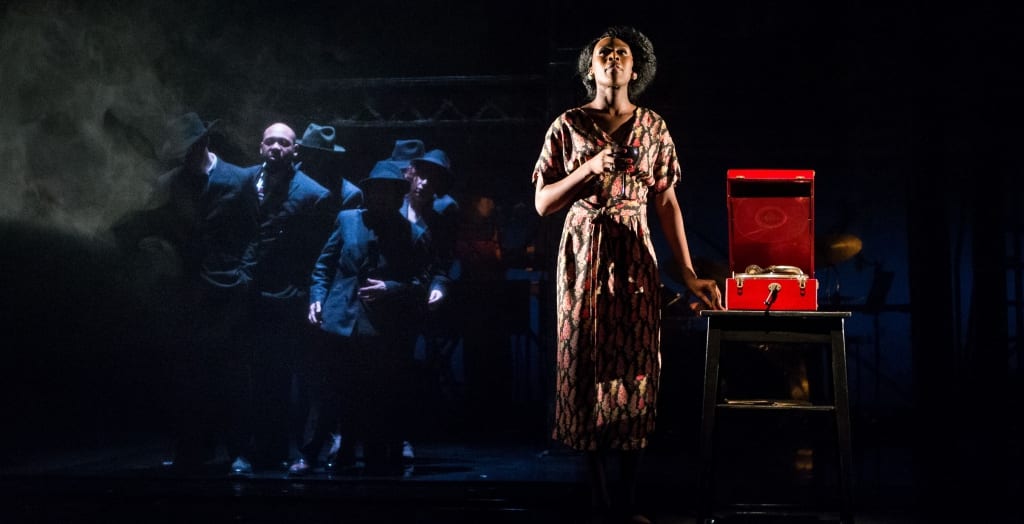Graham Greene’s Brighton Rock is a story of deceit, betrayal, violence and the tragic, notably human, desire for love. Bryony Lavery takes Greene’s novel and reframes it specifically as a coming of age story. As a result, her characterisation of both Pinkie and Rose is powerfully vulnerable, as she gives them a depth and complexity which only heightens the tragedy at the heart of the plot. What is perhaps a little unfortunate, however, is that, at times, this emphasis on the pair’s youth comes at the cost of somewhat simplifying and convoluting some of the story’s other key themes.
Esther Richardson’s direction emphasises through the physicality of the performance the intense violence at the heart of the story. This contributes to the immense style of the production more broadly. From the beautiful, looming silhouette of Brighton pier, to the incredible scene at the races, the show is grittily stylish. This again, however, comes at a cost: The gangsters of the show are at points horrifyingly comedic. The constant nodding and swaying of overly cliché fedora-wearing mobsters distracts uncomfortably from the central action and appears more Bugsy Malone than Graham Greene. Luckily, the quality of the majority of the acting saves the day, with particularly strong and memorable performances by Jacob James Beswick, Gloria Onitiri and Marc Graham.
Hannah Peel’s soundtrack is musically masterful; drawing upon a wide array of influences, from Agnus Dei to the sounds of the cinema, she weaves a score that is both atmospheric and exciting. The presence of the musicians on stage gives an immense physicality to the score, and provides the show with a gripping claustrophobia which sustains the shows driving energy. The only criticism that could be made with regards to music is that in parts it could be louder, as at times it seems just a little too quiet to achieve its full effect.
Overall, the show contains many beautiful moments, both in terms of staging and characterisation, but these are ultimately undermined by a slight preoccupation with style as opposed to substance.

